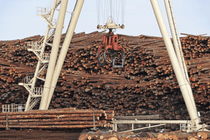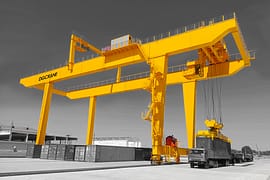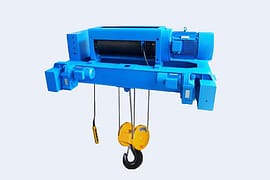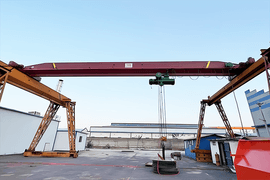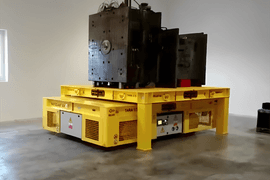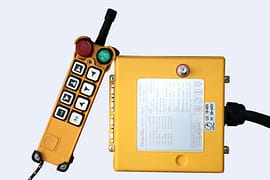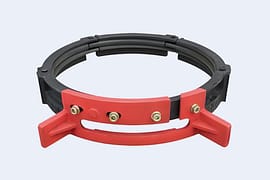Overhead Crane Troubleshooting: Common Failures, Solutions, and Maintenance Tips
Table of Contents
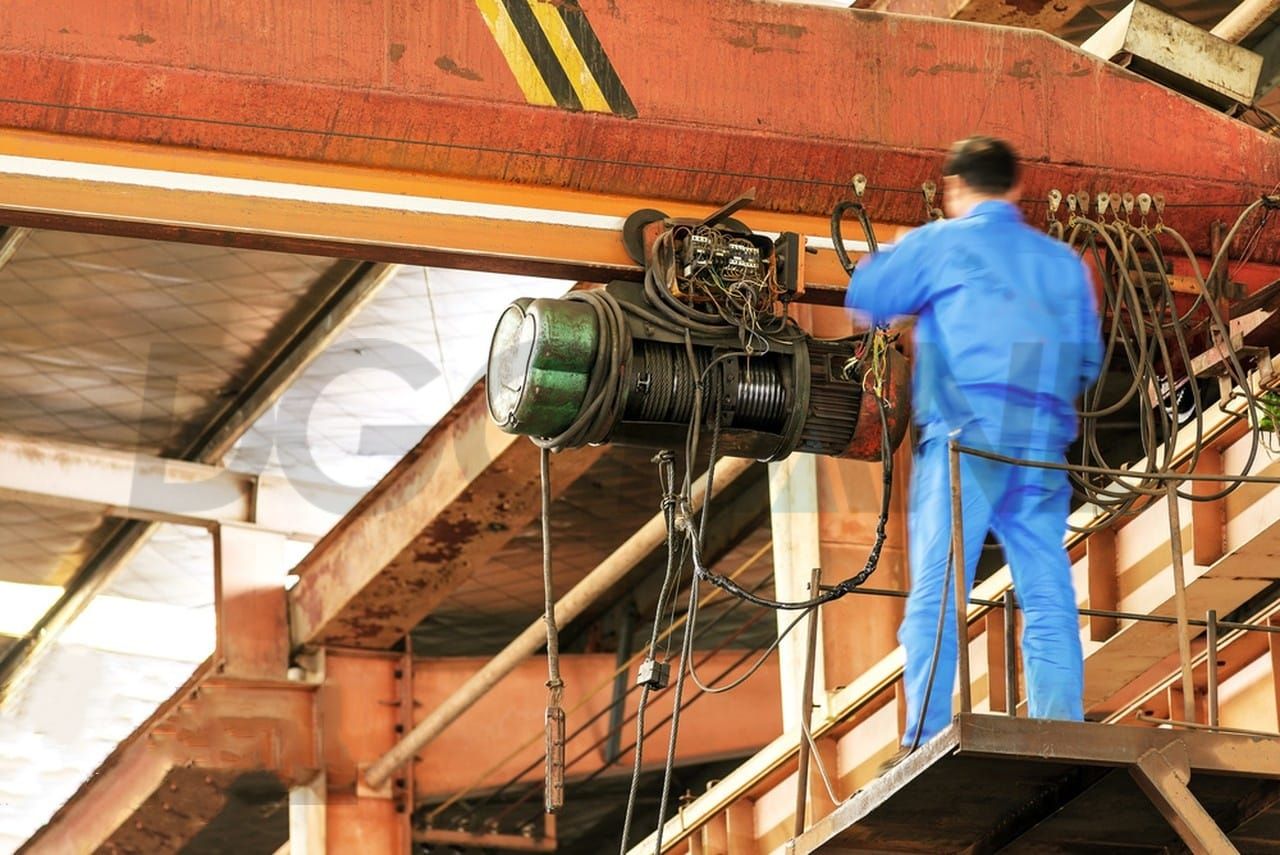
Introduction
Overhead cranes are essential equipment widely used in industrial production and material handling. However, as the frequency of usage rises and operating environments become more diverse to meet modern industrial demands, failures and challenges have become increasingly common. This makes overhead crane troubleshooting a critical focus for ensuring reliable performance in various industries.
These failures not only disrupt the normal operation of the cranes and reduce productivity but may also pose significant risks to the safety of personnel and property. Therefore, it is crucial to analyze common failures in bridge cranes and adopt effective maintenance measures.
Common Bridge Crane Failures and Solutions
This section focuses on four main components—brakes, couplings, gearboxes, and electrical systems—analyzing their failure symptoms, causes, and solutions.
Brake Failures and Maintenance
Symptoms of Brake Failure
- Sudden brake failure: The brake fails to function when needed, causing the load to lose control.
- Reduced braking torque: Over time, braking performance deteriorates.
- Overheating: Excessive friction or poor heat dissipation causes the brake to overheat or even emit smoke.
- Abnormal noise: High-pitched or grinding noises during braking.
Causes of Brake Failure
- Improper adjustment of the gap between the brake and the brake pad, resulting in diminished performance.
- Prolonged use or improper operation causing brake pad detachment or damage.
- Main spring failure due to aging, breakage, or improper adjustment.
- Hydraulic push rod malfunctions caused by oil cylinder issues such as oil shortage, air mixing, or unsuitable grease.
- Wear of bolts and holes, leading to misalignment of the brake pad and wheel centers, causing brake failure.
Solutions
- Stop crane operation immediately when brake failure occurs to mitigate risks and address the specific issue.
- Check voltage irregularities, adjust the push rod mechanism, and inspect electrical components if the brake wheel cannot release. Replace the hydraulic oil and apply lubricants to reduce friction as necessary.
- Inspect brake pad contamination, adjust braking torque, and address wear in brake pads or drums. Replace damaged components, clean the master cylinder, and verify seal integrity.
- Examine the vacuum booster and replace it if faulty. Check brake fluid quality and inspect for leaks in the brake pump or air storage tank, replacing faulty parts promptly.
- Replace excessively worn brake drums or pads. Adjust brakes to ensure even and stable torque. Clean or replace hydraulic fluid to maintain optimal performance.
Coupling Failures and Maintenance
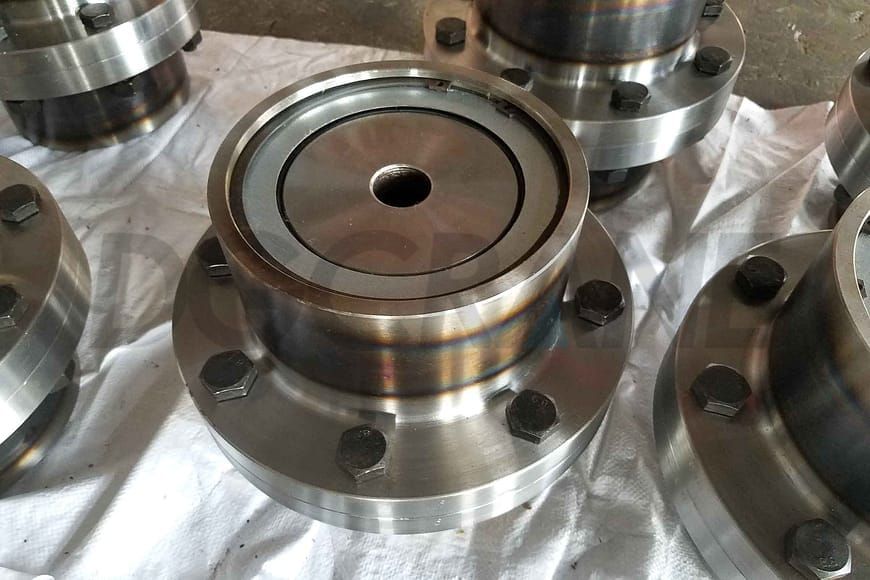
Symptoms of Coupling Failure
- Abnormal vibration and noise: Caused by loose parts, wear, or improper installation.
- Overheating: Due to damaged bearings or seals causing increased friction.
- Transmission failure: Severe wear or breakage leads to crane operation failure.
- Worn bolts and keyway deformation: Indicating component misalignment or excessive load.
Causes of Coupling Failure
- Improper installation, resulting in misaligned axes or improper parallelism.
- Inadequate lubrication of bearings or gears.
- Excessive wear or seal aging from extended use.
- Overloading, exceeding the coupling’s capacity.
Solutions
- Ensure installation precision, adjusting alignment and positioning to meet operational standards.
- Regularly lubricate internal components and maintain oil quality.
- Replace worn parts, including bearings and seals, as necessary.
- Avoid overloading and monitor operational loads.
- Inspect and replace worn gear components, ensuring proper operation.
Gearbox Failures and Maintenance
Symptoms of Gearbox Failure
- Abnormal noise: Such as metallic clanging or grinding, indicating gear or bearing damage.
- Overheating: Excessive internal temperatures caused by lubrication issues.
- Oil leakage: Caused by aging seals or improper installation.
- Transmission failure: Due to gear breakage or severe wear.
Causes of Gearbox Failure
- Insufficient lubrication or oil contamination leading to increased friction.
- Overloading, stressing gearbox components beyond design limits.
- Poor installation or failure to replace worn parts during maintenance.
- Manufacturing defects, such as improperly machined gears or unsuitable materials.
Solutions
- Regularly inspect lubrication systems, ensuring adequate and clean oil supply. Clear obstructions in oil pathways.
- Implement overload protection devices and adhere to operational load limits.
- Ensure precise installation and conduct regular maintenance, replacing worn components promptly.
- Address oil leakage by resealing joints, replacing seals, and tightening bolts where necessary.
Electrical System Failures and Maintenance
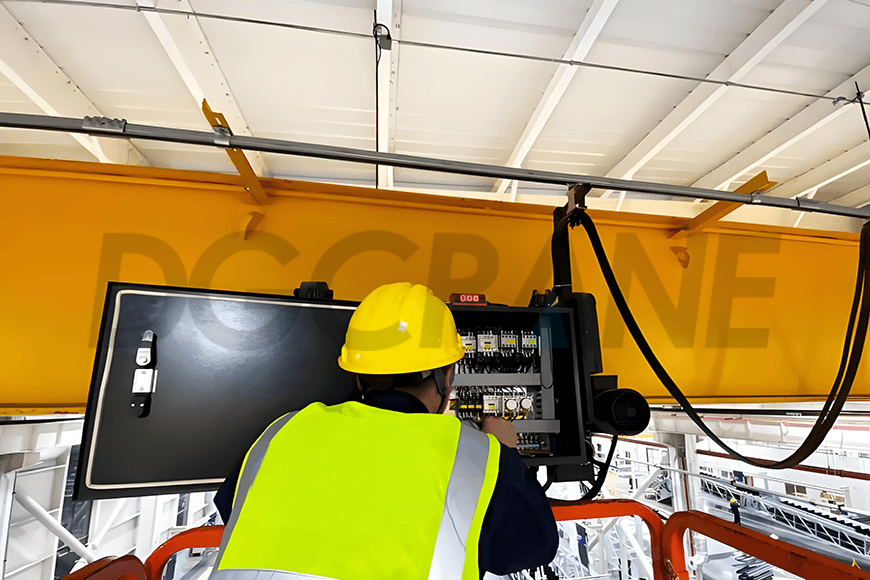
Causes of Electrical Failures
- Frequent speed changes or lifting operations leading to rapid wear or overheating of contactors.
- Overloading causing excessive startup currents and burning motor windings.
- Limit switch malfunctions causing operational issues like hook over-travel.
- Substandard replacement parts causing coil overheating and motor damage.
- Loose bolts in power or resistance boxes causing poor electrical connections.
Solutions
- Regularly inspect power lines and replace damaged or aged components.
- Replace malfunctioning electrical components, such as control buttons or indicators.
- Clean and inspect motors, addressing winding or bearing issues.
- Install overheating protection devices for motors and balance three-phase voltages.
To dive deeper into overhead crane electrical troubleshooting and gain valuable insights into identifying and resolving common issues, check out our comprehensive guide. Plus, don't miss the opportunity to download a free PDF resource packed with expert tips and solutions: Essential Overhead Crane Electrical Troubleshooting Guide
Pulley Malfunction
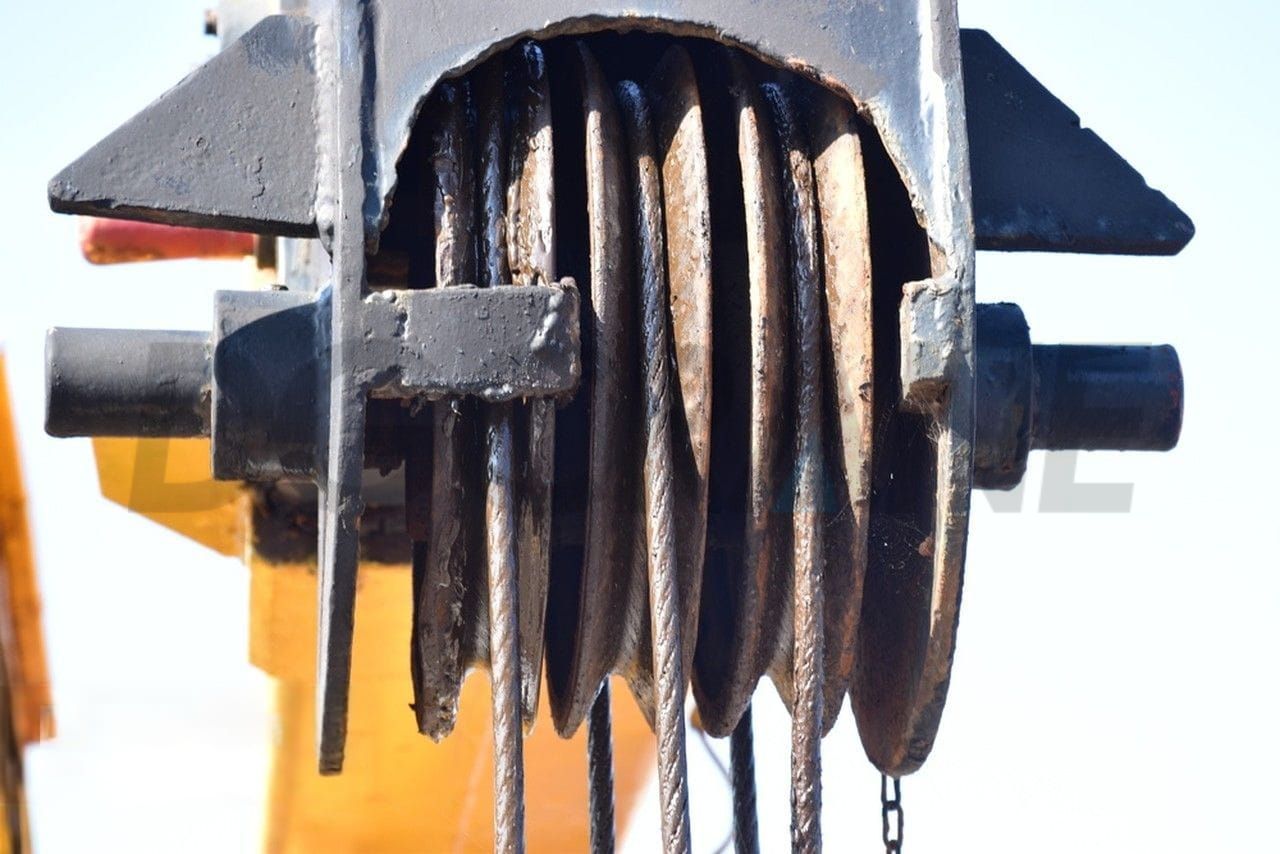
Cause Analysis
As a critical transmission component in bridge cranes, pulley malfunctions typically manifest in the following ways:
- Material and Installation Issues: Uneven material quality can lead to uneven wear in the rope groove, while improper installation may cause poor contact between the rope and the pulley, accelerating wear.
- Shaft Wear: Prolonged heavy-duty operations can cause gradual wear of the shaft, and excessive wear compromises pulley stability and safety.
- Rope Jamming: Poor pulley rotation or twisted ropes can interfere with normal operation.
- Pulley Misalignment or Loosening: Caused by loose ropes or installation errors, this affects lifting stability. Extreme conditions like overloading or abrupt stops may induce cracks or flange breakage.
Solutions
- Regular Inspection and Maintenance: Monitor pulley wear, particularly rope groove uniformity. Severe wear should prompt immediate adjustments or replacements. Proper installation is equally critical to ensure alignment accuracy and effective rope-pulley interaction, minimizing wear or jamming.
- Lubrication and Cleaning: Regularly lubricate pulleys to reduce friction and clean off dirt to maintain optimal operation.
- Shaft Wear and Structural Damage: Replace damaged parts immediately upon discovering cracks or excessive wear. Adhere to load limits and operate cranes smoothly to prevent impacts on the pulley. Advanced monitoring systems for vibration and temperature can help detect potential issues early, enabling preventive maintenance.
Hoisting Equipment Malfunctions
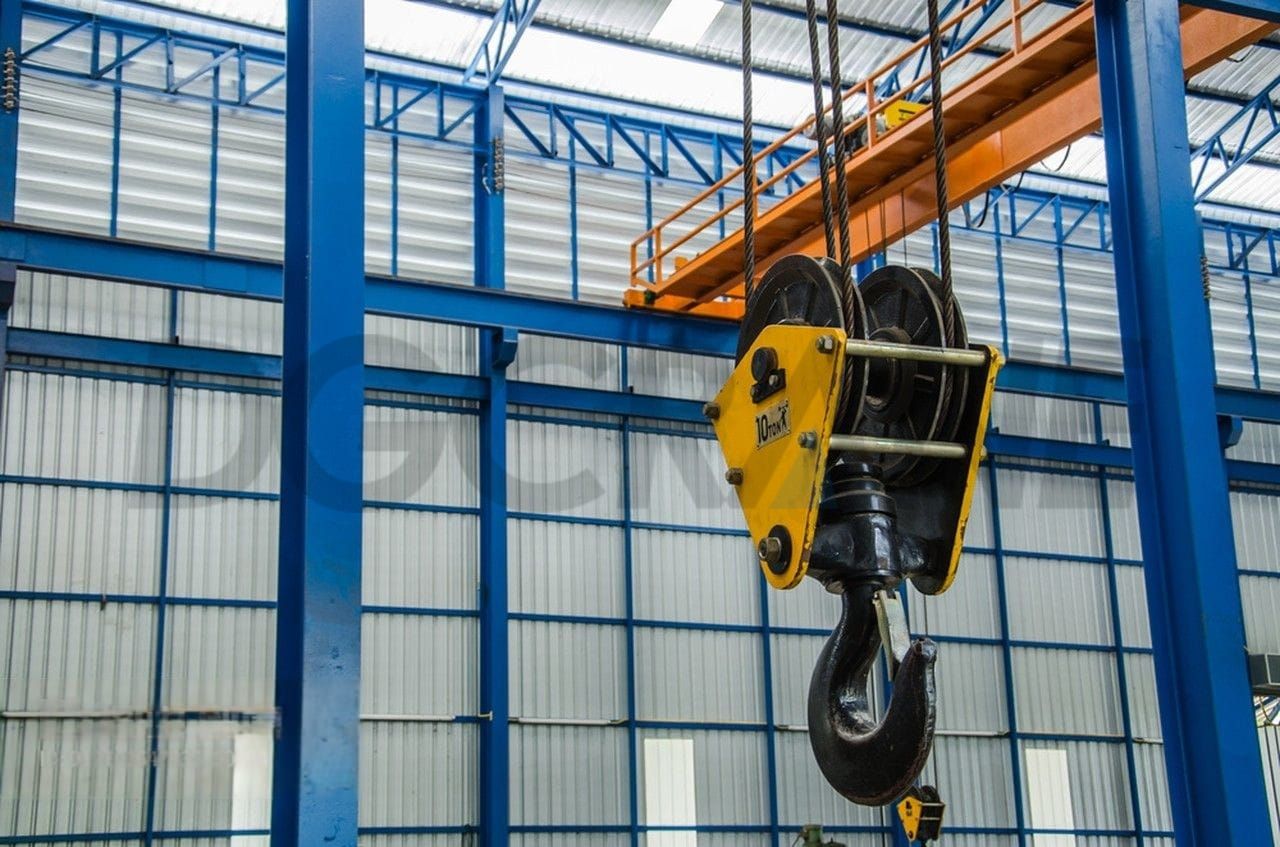
Common Issues and Causes
- Rope Derailment: Variations in load shape, weight, hook position, and binding methods can cause uneven stress on the wire rope, leading to derailment and eventual breakage.
- Load Drop (Brake Failure): Brake system failure during lifting or lowering can result in sudden drops. Causes include excessive wear of brake wheels, weakened spring elasticity, slipping brake bands, loose locking nuts, or damaged brake pads.
- Drum Malfunction: Friction between the drum and wire rope during extended use can thin or damage the drum wall. The reduced strength may eventually lead to breakage.
- Overwinding: Misalignment or failure of limit switches, loose brakes, or damaged control components may cause overwinding. Excessive pressure on fixed and movable pulleys can damage them or tear the wire rope.
Troubleshooting Measures
- Rope Derailment: Adjust the wheel housing angle for smooth rotation and ensure the rope re-enters the groove properly. Replace the pulley if needed and test it before resuming operations.
- Brake Failure: Replace brake pads and adjust the brake position. Replace damaged brake wheels and tighten screws to reduce risks.
- Drum Malfunction: Inspect drum wall thickness as per maintenance guidelines, replacing worn or damaged drums immediately. Regular cleaning and lubrication prevent rust.
- Overwinding: Install alarm systems that trigger upon hook overreach. The operator can then perform emergency braking based on the alarm.
Wheel Rail-Gnawing Malfunction
Cause Analysis
Rail-gnawing refers to excessive wear between wheel edges and the supporting rail. Common causes include:
- Significant diameter differences between main wheels causing uneven travel speeds.
- Excessive gaps in the transmission or braking systems leading to misalignment.
- Non-compliant wheel installation or manufacturing.
- Fatigue deformation of the bridge frame or asynchronous motors.
- Misaligned or uneven rail installation and support.
Solutions
For wheel rail gnawing issues, a fault tree can be used to systematically eliminate potential causes, as shown in the diagram below.
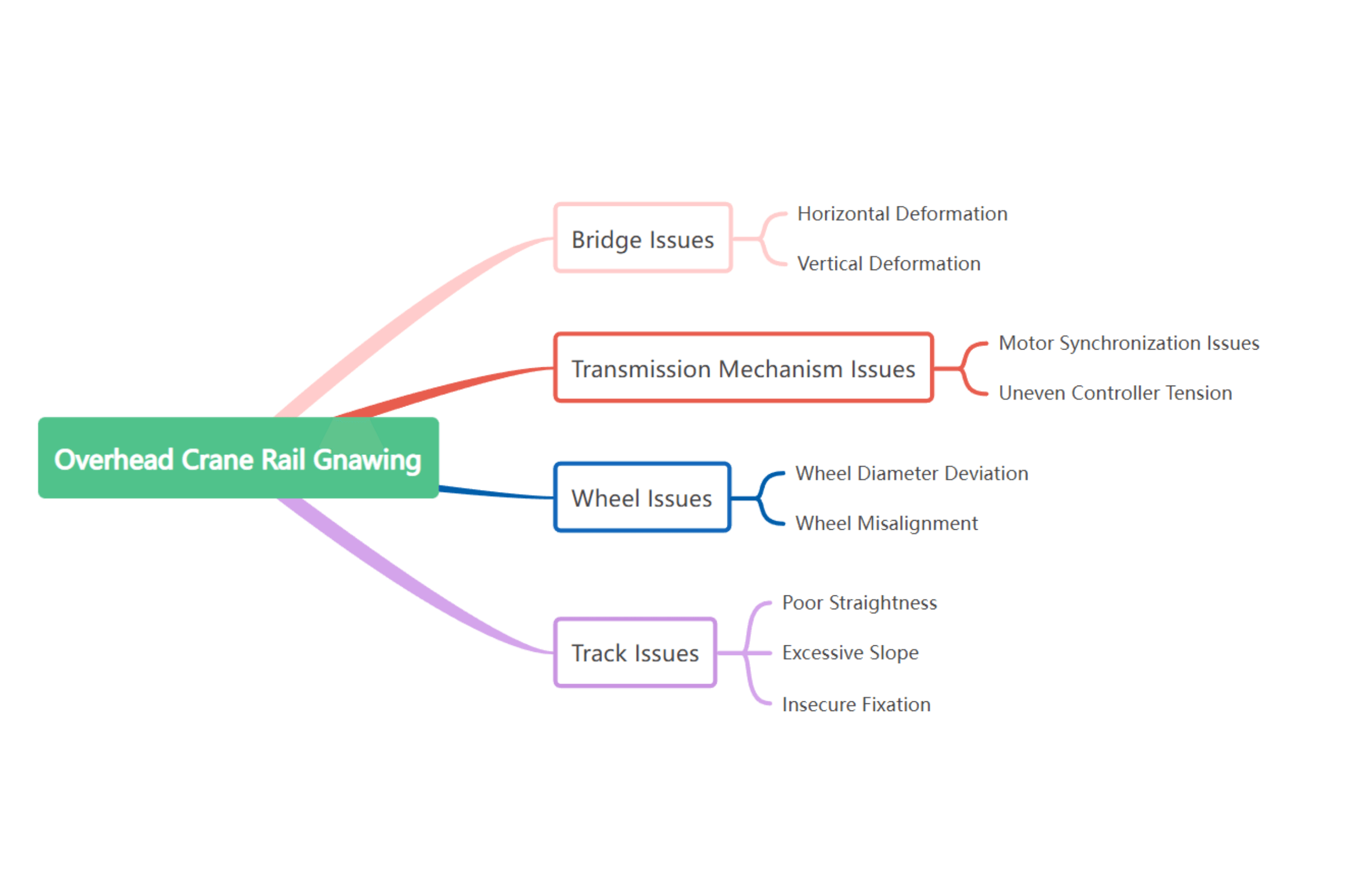
- If the issue lies in the bridge structure, it is generally caused by fatigue deformation. In this case, the relative diagonal difference of the two end carriages can be measured to clarify the direction for correction and repair, ensuring that the deviation meets technical specifications.
- If the issue is in the transmission system, the gap difference between the two sides of the transmission system should be measured. After adjustments, ensure it is within the specified range, and resolve motor synchronization problems using technical methods.
- If the issue is with the wheels, replace them with standardized wheels to reduce diameter deviation and check installation accuracy.
- If the issue lies in the track, clean the track thoroughly to ensure it is free of oil, dust, and debris. Additionally, ensure the adjusted crane track installation height and support positions comply with installation standards.
By implementing the above measures, the wear between the wheel flange and the load-bearing rail can be effectively mitigated or even avoided, thereby resolving the wheel rail gnawing issue efficiently.
Other Malfunctions
Common Issues
- Deformation: Reduced arch in main beams or deformed end beams.
- Trolley Malfunctions: Issues like suspended wheels due to design flaws, installation errors, or frame deformation.
- Slipping: Occurs due to oily, dusty tracks or improperly installed wheels.
- Body Swing and Vibrations: Excessive vibrations during motor startup can disrupt operations.
Solutions
- Deformation: Use tensioning methods like prestressed steel wire or rods, or heat treatment to correct deformation. Control environmental factors, operational behaviors, and welding quality to minimize recurrence.
- Trolley Issues: Replace defective wheels and adjust suspended wheels to align with others. For frame deformation, use flame straightening or track height adjustments.
- Slipping and Vibrations: Clean tracks thoroughly and increase wheel friction coefficients. Reinstall wheels if needed, ensuring alignment standards.
Maintenance of Bridge Cranes
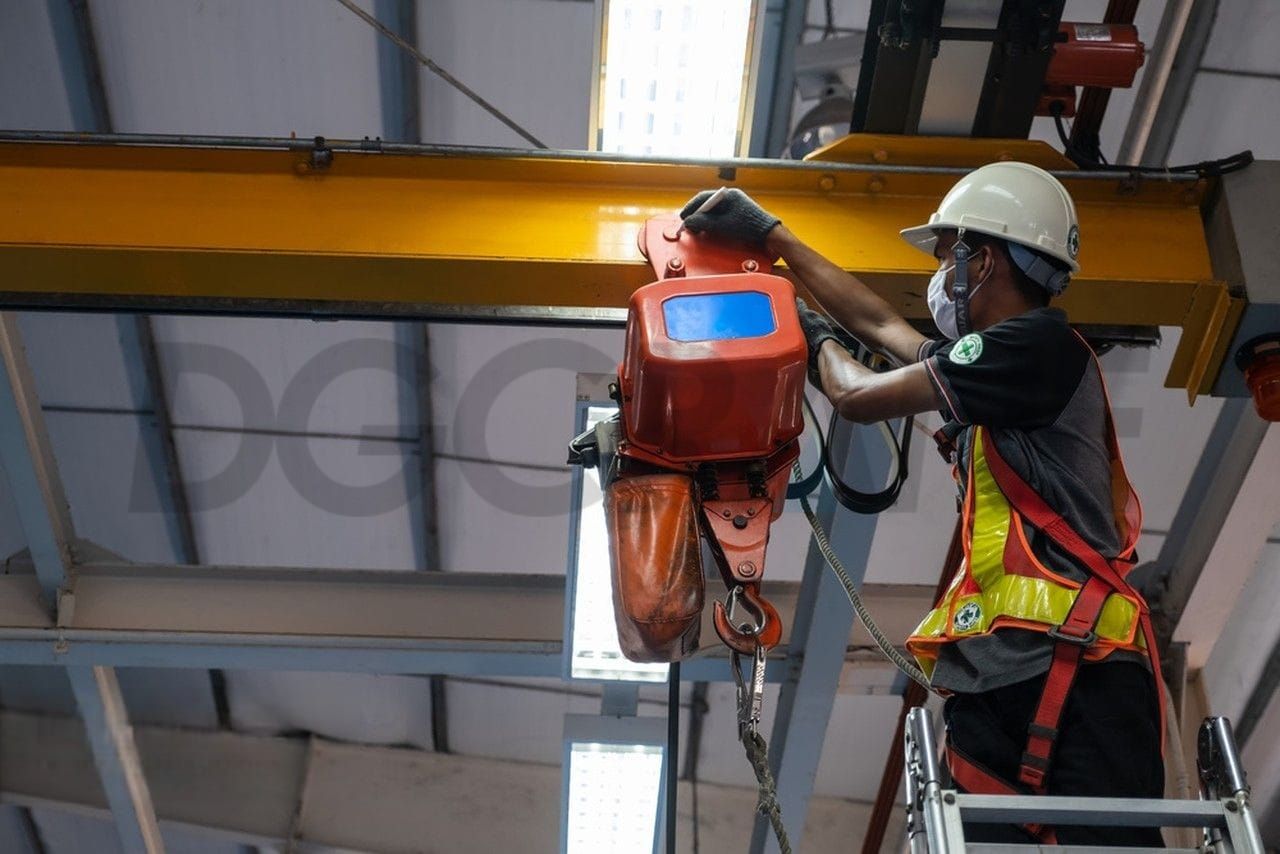
Daily Maintenance
- Cleanliness: Use soft cloths to remove dust, grease, and debris.
- Lubrication: Inspect and lubricate daily to ensure proper functioning of lubrication points.
- Component Checks: Inspect for loose parts, wire rope wear, wheel sturdiness, and responsive controls.
- Brake System: Regularly check and adjust brake components for cleanliness and reliability.
Scheduled Maintenance
- Level 1 Maintenance: In addition to daily tasks, inspect key components (e.g., wire ropes, gears, couplings) and check oil levels.
- Level 2 Maintenance: Conduct comprehensive system inspections, replacing heavily worn parts to maintain performance.
Preventive Maintenance
Regular safety assessments and predictive diagnostics can minimize failures. Maintain detailed maintenance records to track equipment performance and reduce serious issues.
Enhanced Management
- Maintenance Policies: Define maintenance levels and cycles. Assign clear responsibilities and maintain detailed archives for future reference.
- Technical Training: Provide regular training for maintenance personnel to enhance skills and establish rapid response mechanisms for efficient repairs.
Conclusion
Addressing crane malfunctions effectively ensures operational safety, reduces maintenance costs, and enhances equipment reliability. Companies should implement fault diagnosis systems, strengthen technical training, and innovate processes to achieve efficient and safe crane operations.
Contact Details
DGCRANE is committed to providing the professional Overhead crane products and relavent service. Exported to Over 100 Countries, 5000+ Customers Choose Us, Worth to be Trusted.
Get In Touch
Fill out your details and someone from our sales team will get back to you within 24 hours!









